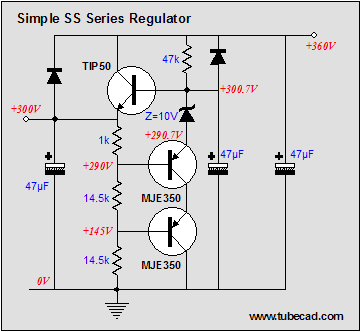I am trying to figure out how to fudge this reg circuit dowwn closer to 290VDC. The article says to take out one of the PNP transistors to get less than 300V. It looks like it shouldn't be to hard, I just cant seem to wrap my head around the theory though.
-looks like this is backwards -from diode bridge on right.

The article his here:
http://www.tubecad.com/2006/11/blog0087.htm
Any help would be greatly appreciated.
PS- I bet no one can guess what this is for.
-looks like this is backwards -from diode bridge on right.

The article his here:
http://www.tubecad.com/2006/11/blog0087.htm
Any help would be greatly appreciated.
PS- I bet no one can guess what this is for.















